The 10 best lettuces for the healthiest 365-day salad supply
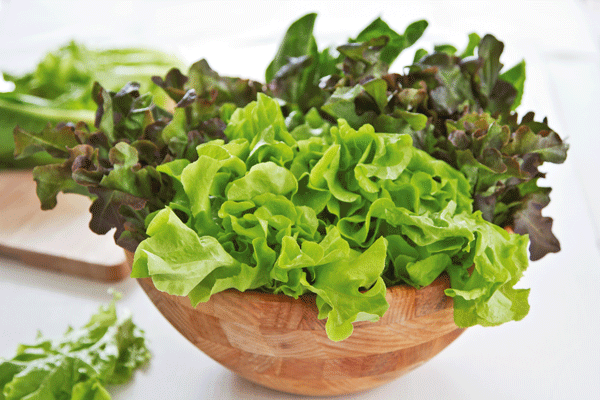
A good salad wouldn’t be complete without lettuce; it is the making of a perfect side dish for summer, but Jenny Somervell will convince you that lettuce is a vegetable that can be enjoyed all year-round.
Words and images: Jenny Somervell
I read in a nutrition text once that lettuce had insignificant nutrients or health benefits. I was surprised, disappointed, puzzled. Why did I feel so healthy after eating a fresh salad?
When I was diagnosed with metastatic melanoma in 2005, I researched everything I could do to stay healthy and live longer. Near the top of the list was a diet high in organically-grown, raw greens. Surprise! I decided right then to eat more home-grown raw greens, and lettuce salads were at the top of the list.
My son was 10 at the time and you will not be surprised to hear he treated the change in diet with a marked lack of enthusiasm. Eventually we gave up serving him lettuce and settled for chopped raw carrots and apples (which he still loves to eat today).
But my husband and I stuck to the plan. For the past 11 years we have eaten salads almost daily for most of the year. I expected to feel a little healthier and certainly virtuous, but what I didn’t expect was to love these crunchy side dishes so much. Now, if a meal does not include a salad, I feel deprived.
For the past three years our salad greens have come solely from our own garden. Winter nights are pleasantly occupied poring over seed catalogues, and I feel delighted, and sometimes dazed, by the great diversity in shapes, colours and textures, from smooth to frilled, notched and scalloped, from red to golden-green, magenta and even teal.
The loose-leaf varieties offer the greatest diversity. The butterheads are somewhere in between the loose-leaf and the crisphead varieties I grew up on, with a slightly thicker leaf and a soft, buttery texture. The Mediterranean-based cos or romaine lettuces are different again in taste, texture and shape, with distinctive, crisp, upright, elongated heads.
It would seem we’ve come a long way from the narrow range available when I was in charge of the family vegetable garden in the 1960s and 70s, but in truth we are going backwards. As with other vegetables, many of the ‘new’ colourful varieties in seed catalogues are heirlooms, re-discovered from the past when salads were much more diverse.
POOR MAN’S OPIUM
The Romans conferred these plants with the generic name ‘lactuca’ meaning ‘milky juice’ after the bitter, milky latex with narcotic properties which is expressed when the stem is cut. All lettuces contain this narcotic juice but wild lettuce (L. virosa) has the most.
This biennial herb grows to almost 2m in height and is sometimes called ‘poor man’s opium’. It has been used as an opium adulterant, although it is not addictive like opium and doesn’t upset the digestive system. Modern lettuces contain less of it, although it is still there.
For thousands of years, lettuce was cultivated for medicinal properties contained in the latex, including calming, sedating, and pain relieving effects. The Emperor Augustus believed his recovery from illness was due to lactuca and built an altar and statue in its honour.
Collectors would cut the heads of wild lettuce and scrape the juice into china vessels. The dried juice, when hardened, turns brown and is known as lactucarium. Lettuce was prescribed for inducing sleep, as nasal drops, a mild sedative, and to relieve anxiety, as well as for whooping cough, asthma, urinary tract problems, cough, poor circulation, joint pain, insomnia and excitability in children.
These effects are not well researched, but experimental models and mice have indicated some sleep-inducing and anxiety-reducing effects, and cholesterol-lowering and anti-microbial effects with a number of yeasts, including candida.
Lettuce even had sexual symbolism. If the flowering stalk is cut off, the latex spurts out under pressure, which may be why the Egyptians believed eating lettuce was thought to increase sexual potency and prowess. The Greeks, on the other hand, connected it with male impotency. Even in the 19th century British women believed it would cause infertility and sterility.
WHICH LETTUCE IS HEALTHIEST?
Deeper coloured, heirloom lettuces are nutritionally superior. As with other vegetables, lettuces with a more bitter flavour and more intense colour have more nutrients and anti-oxidants. Conversely, the paler the leaf, the lower the nutritional value.
Traditional crisphead-types with pale internal leaves have much lower nutritional value, with the lowest Vitamin A and C content, and less thiamine, riboflavin, pantothenic acid, B6 and Vitamin E.
A one cup serving of an iceberg lettuce contains only 361 IU of vitamin A, compared to 1822 IU in butterheads, 266IU in greenleafs and 2912 IU in romaines. The latter provides a significant 58% of the daily allowance of Vitamin A, giving it ‘Dark Green Vegetable’ status from the USDA. Romaine and leaf varieties outrank other lettuces for most common nutrients. Butterhead lettuces are richest in calcium, potassium and iron.
Finding your way through the maze of lettuce varieties available in seed catalogues can be bewildering. It is helpful to see lettuces as broadly falling within four groups.
CRISPHEAD OR ICEBERG LETTUCES

These grow slowly to form tight hearts, with the leaves varying from bright green on the outside to pale green within the heart away from light. They are still the main varieties grown for market because they pack, travel and store so well. Icebergs form the best heads in spring and autumn but tend to bolt prematurely in hot summer conditions. There are bolt-resistant varieties, although they can be prone to tip burn in the heat of summer.
LOOSE-LEAF LETTUCES
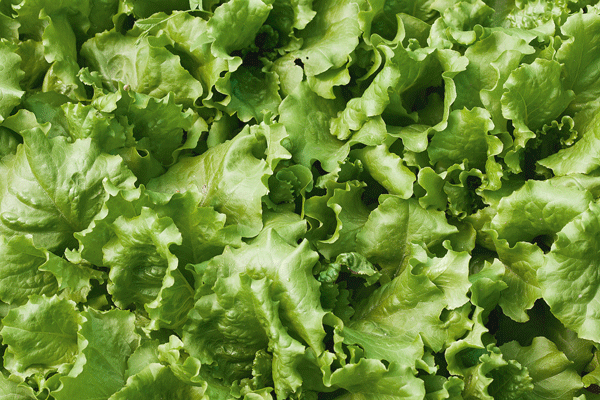
The home gardener has access to a diverse and exciting array in the loose-leaf lettuces. These feature soft, textured leaves, rosettes rather than hearts, and a diverse range of colours, from buttery yellow to two tone reds and greens, tawny brown and magenta. The leaves may be deeply notched, flat, curled, crinkly, wavy or frilled and the effect can be very ornamental.
Loose-leaf lettuces are easy and fast to grow, maturing in about 50 days, and can be picked a leaf at a time. Early picking can start from 30 days at baby leaf stage, cutting at 8-12cm for regrowth.
Loose-leaf lettuces are tender and delicate in flavour. They are reasonably hardy but hold better in summer as young greens than as mature plants. These are the mainstay of our home supply and we love them.
BUTTERHEAD (BOSTON OR BIBB) LETTUCES
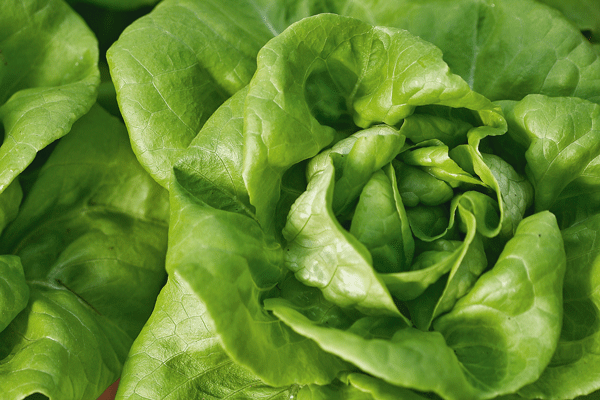
Butterhead lettuces form heads, but they are much looser than crisphead, with a crumpled head, soft texture and a very delicate flavour. While some, like Buttercrunch, hold well in hot weather, they tend to become bitter.
They typically grow well in shorter day length and are better for spring and autumn planting, and for greenhouse growing in winter. They wilt quickly after picking and are rarely available in shops. Most are green.
COS OR ROMAINE LETTUCES
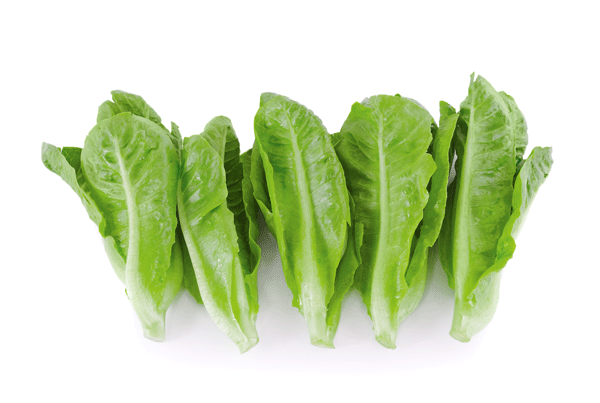
These are of Mediterranean origin, ‘romaine’ being a derivation of Roman, and ‘cos’ coming from Kos, a Greek Island. The romaine lettuces are more upright, forming tight, elongated hearts. These combine the crisp juiciness of head lettuces with the nutritional value of leaf lettuce. They are popular with chefs for caesar salads, with their long, thick, crisp leaves and distinctive flavour.
The larger forms are slower growing. Romaines are good at withstanding hot, dry conditions. Green varieties are better for summer growing than red romaines, which tend to bolt.
BATAVIAN LETTUCES
Also called summercrisp, or French crisp, Batavian lettuces are midway between the crisphead and leaf types. They are large lettuces, with good flavour. The thick outer leaves can be harvested as a loose-leaf, until the head starts to form, which is crisp and juicy with a slight nutty flavour.
When researchers at Colorado State University were evaluating bolting resistance, they found that Batavian lettuces resisted bolting longer than any other type of lettuce, staying crisp and tasty.
THE HISTORY OF LETTUCE
Domestication of lettuce began with the Egyptians more than 3000 years ago, with tallish, deep-rooted, prickly plants, which quickly bolted to release seeds.
By 2000 BC pictures on Egyptian tombs showed lettuce plants resembling the upright romaine lettuce. These moved around the Mediterranean Sea to the Middle East and Europe.
Ancient Roman references refer to green, pale, white, tawny, reddish and purple tones – the full plethora of colours available today – and variations in texture from smooth to curly types.
A subspecies called celtuce, which formed crunchy, elongated, celery-like stems, travelled east, eventually reaching China. As these lettuces travelled through Persia, Greece, Rome, Sicily and later into France, Germany and England, different types were adapted for different environments. Between the 16th and 18th century the modern butterhead, leaf and crisphead varieties were selected in Europe, especially Holland.
JENNY’S TOP 10 LETTUCE PICKS FOR SALADS ALL YEAR-ROUND
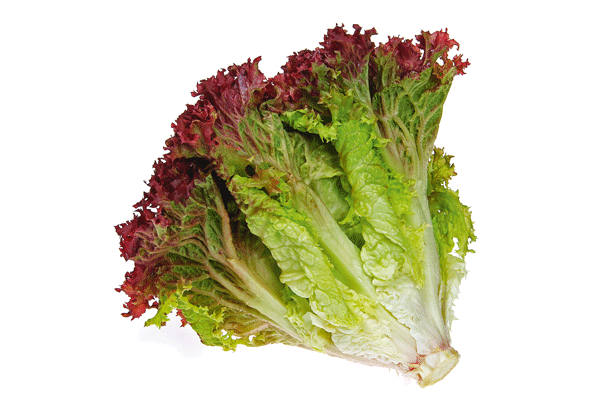
LOOSE-LEAF LETTUCES
There are so many I could recommend, but here goes:
Royal Oak Leaf: more heat tolerant than standard oak leaf. I grow this dark green variety year-round (in shade through summer). Very quick-growing and tender, even in hot weather.
Drunken Woman Fringed Head: Italian heirloom with attractive bright green leaves with ruffled edges in red/bronze, and a dense centre. Slow to bolt.
Lollo Rossa: worth growing for ornamental value alone for its dark red-edged, heavily frilled leaves.
BUTTERHEAD LETTUCES (60 DAYS)
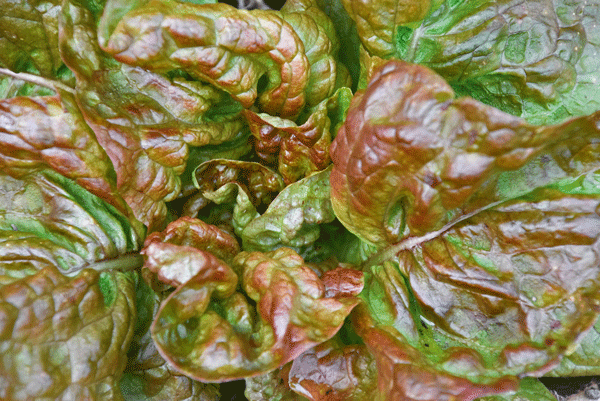
Merveille des Quatre Saisons (Marvel of Four Seasons): Beautiful magenta outer leaves, contrast with copper-tipped centre leaves which fade to pale green and cream on the inside – lovely! We grow this year-round, and it’s guaranteed to cheer up any garden.
Buttercrunch: the best butterhead for summer. Very dark green (hence healthy), compact, rosette-type heads just 15cm across. Good for intercropping between rows.
COS OR ROMAINE LETTUCES
Little Gem: this very compact form is ideal for small gardens, just 10-15cm in diameter and 20cm high, with a sweet, delicious flavour.
Rouge d’Hiver (Red of Winter): broad, striking, bronze-red leaves feature on this heirloom red form, suitable for the colder months.
BATVIAN LETTUCES
Canasta: we grow this versatile beauty year-round. Shiny, puckered, bright green leaves are tinged red and form a whirl around a soft oval head with a crisp, cream coloured heart. Tip burn and bolt-resistant.
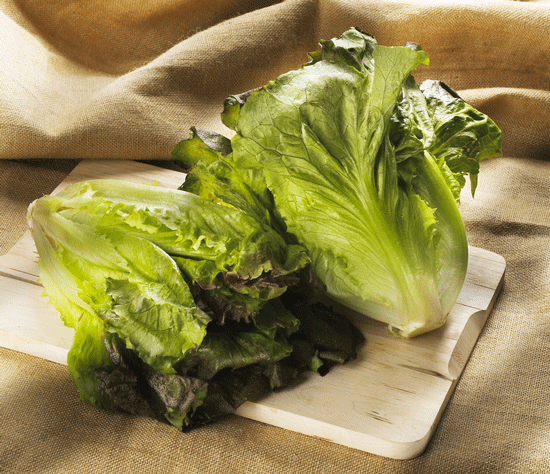
HEADING LETTUCE
Great Lakes & Webbs Wonderful: the reliable – if unexciting – options for summer production.
Reference: The Cook’s Salad Garden by Mary Browne, Helen Leach, Nancy Tichborne (2010)

